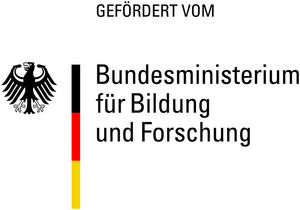About BBCI
For several years, research groups in Europe and the USA have been working on systems which allow for a direct dialog between man and machine. To this end, a "Brain Computer Interface" (BCI) has been developed. Cerebral electric activity is recorded via the electroencephalogram (EEG): electrodes, attached to the scalp, measure the electric signals of the brain. These signals are amplified and transmitted to the computer, which transforms them into device control commands. The crucial requirement for the successful functioning of the BCI is that the electric activity on the scalp surface already reflects motor intentions, i.e., the neural correlate of preparation for hand or foot movements. The BCI detects the motor-related EEG changes and uses this information, for example, to perform a choice between two alternatives: the detection of the preparation to move the left hand leads to the choice of the first, whereas the right hand intention would lead to the second alternative. By this means it is possible to operate devices which are connected to the computer; such a communication can even be realised via the internet.
Funding
The project (BMBF Förderzeichen 01KO0121, 01IBB02A/B, 01IBE01A/B, 16SV5839), which is supported by the ministry for education and research (Bundesministerium für Bildung und Forschung, BMBF), comprises the development of EEG-driven systems for computer-aided working environments. These systems will, for instance, allow for the control of a mouse pointer by means of brain waves. Furthermore, medical tools are being created for patients suffering from amyotrophia or quadriplegia.
Cooperation and Partners
This research program is done in a cooperation between the Technische Universität Berlin, Machine Learning Group (Prof. Dr. Klaus-Robert Müller) and Neurotechnology Group (Prof. Dr. Benjamin Blankertz), and the Neurophysics group, Department of Neurology at Campus Benjamin Franklin, Charité - University Medicine, Berlin, (Prof. Dr. Gabriel Curio).


